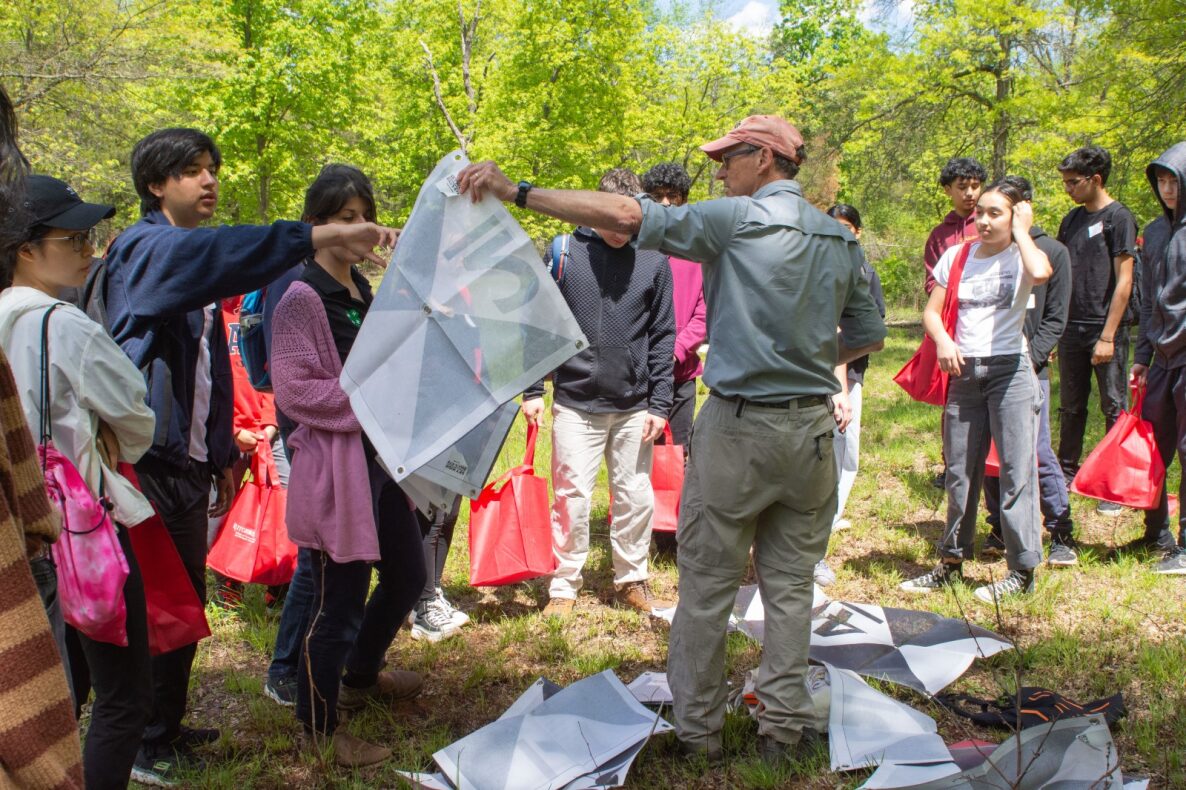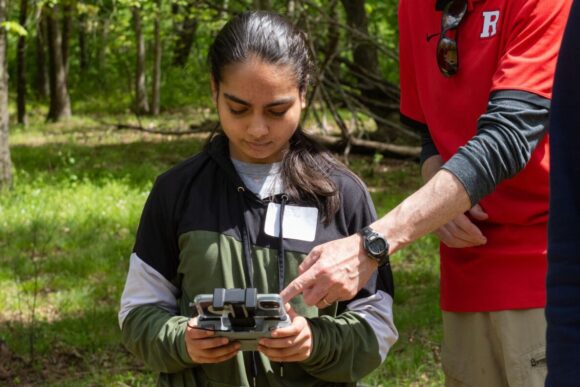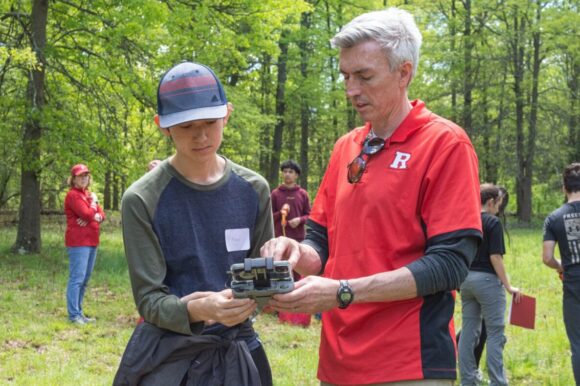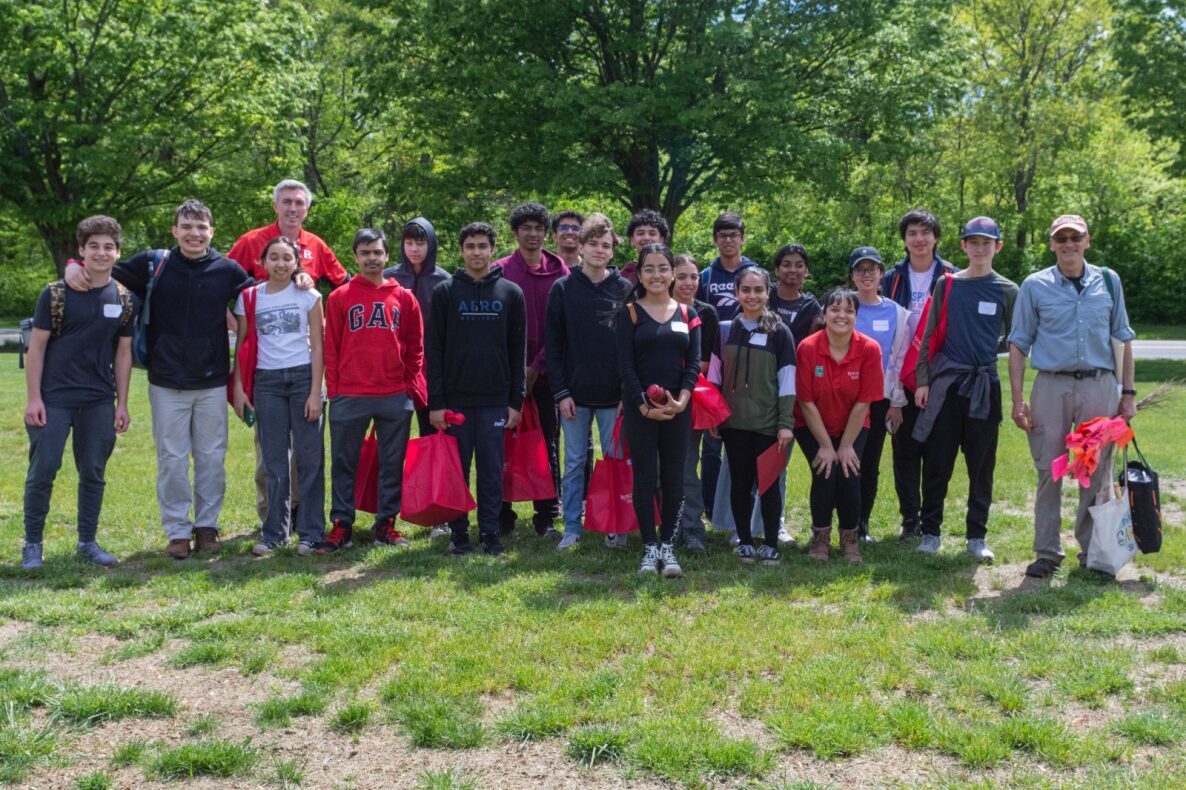
K-12 students are laying ground control points for the drone to map the Rutgers EcoPreserve. Prof. Richard Lathrop is in the foreground.
Shreya Dutt, a high school student in East Brunswick, was fascinated by the topic of controlled application of fire used by experts to manage forests that she developed a video for use in her local library and as part of her YouTube channel.

East Brunswick high school student, Shreya Dutt, learns how to operate a drone to map burn plots in the Rutgers EcoPreserve.
Shreya was one of 20 high students who spent two Saturdays over this summer in an immersive 4-H sponsored STEM program sponsored by NASA’s New Jersey Space Grant Consortium. The two-day program was focused on prescribed fire, or the controlled application of fire by experts, which is increasingly used across New Jersey as a management technique to maintain and increase the species diversity in meadows and to control exotic invasive species in woodlands.
Rutgers experts on the New Brunswick campus used a combination of in-class and field instruction to teach the K-12 students about the effectiveness of prescribed fire as a forest management tool. The Rutgers Ecological Preserve and Natural Teaching Area, a 360- acre wooded preserve located between the Busch and Livingston campuses, served as the location for the students’ hands-on experience.

Hugh Roarty (at right) research program manager at RUCOOL instructs a K-12 student in the use of a drone at the Rutgers EcoPreserve.
Hugh Roarty, research project manager with the Center for Ocean Observing Leadership at Rutgers, demonstrated how to use a drone to collect post-burn imagery. Kendall Eldridge, Ecology and Evolution graduate student, Richard Lathrop, director of the Center for Remote Sensing and Spatial Analysis and faculty director of the EcoPreserve, and Lucas Marxen, director of the NJAES Office of Research Analytics, taught the students how to use GIS technology to develop map coordinates or ‘geolocate’ the burn plots. The students were also taught how to compare the data collected in the field with the pre- and post-burn imagery.
The students were tasked with documenting the short-term effects of prescribed fire on the EcoPreserve’s meadows and woodlands as well as developing a plan to plant native plants to increase habitat for pollinators.
An important part of the program included the challenge to the students to share their experiences within their communities, leading to Shreya producing a video document what she learned in the two-day program.
4-H STEM Ambassadors, Rossy Ramirez, Neelay Tilekar, Sofia Oliveira Dias and Christian Rojas, will also be sharing their experiences with younger kids by teaching in afterschool programs in their local communities. The STEM Ambassador program, which was established in 2009, supports the development of STEM identity in underrepresented youth from Passaic, Union, Mercer, Essex, Middlesex and Atlantic counties. The youth then serve as Ambassadors in their communities teaching and mentoring younger children at local YMCA and Boys and Girls Clubs, reaching thousands of youth over the course of the year.
Supported by Rutgers 4-H Youth Development, Center for Remote Sensing Spatial Analysis and the Department of Marine and Coastal Sciences, this immersive STEM experience is one of several programs sponsored by NASA’s New Jersey Space Grant Consortium, the space agency’s educational arm in New Jersey for higher education.

K-12 student participants in the STEM program on prescribed fire in forest management STEM program, sponsored by NASA’ New Jersey Space Grant Consortium.

